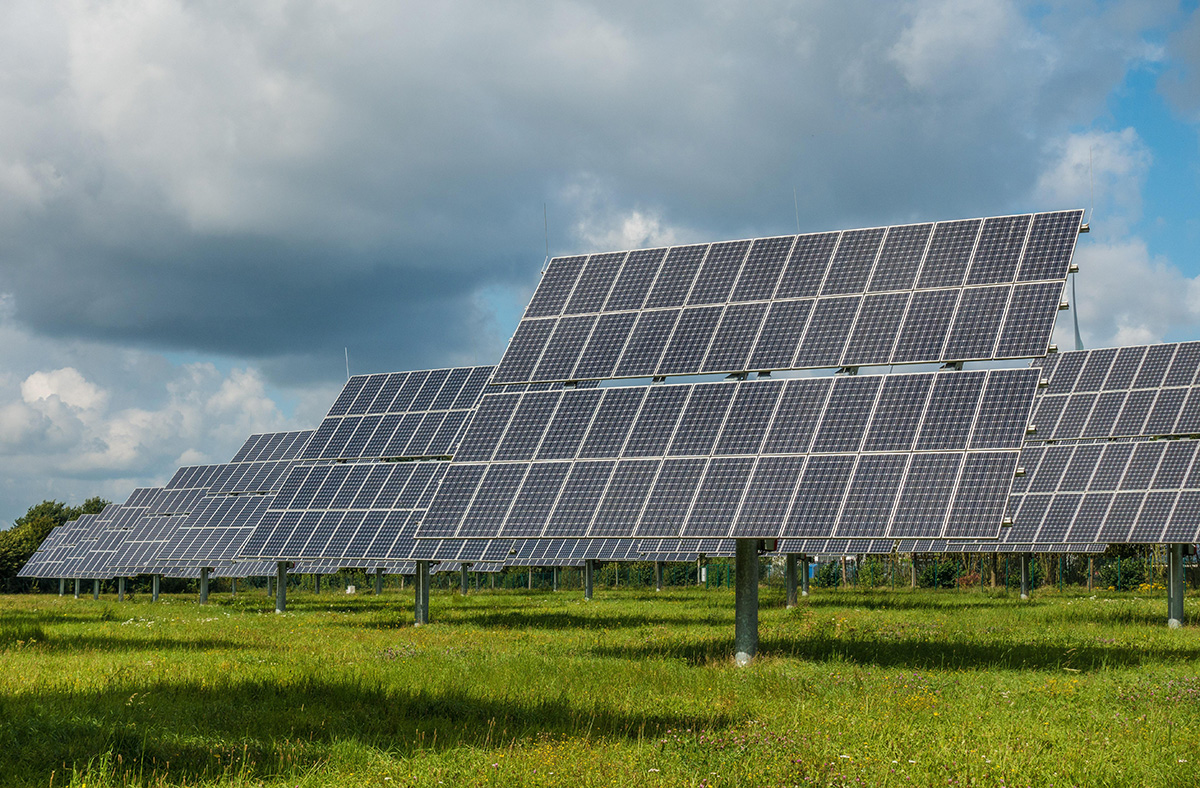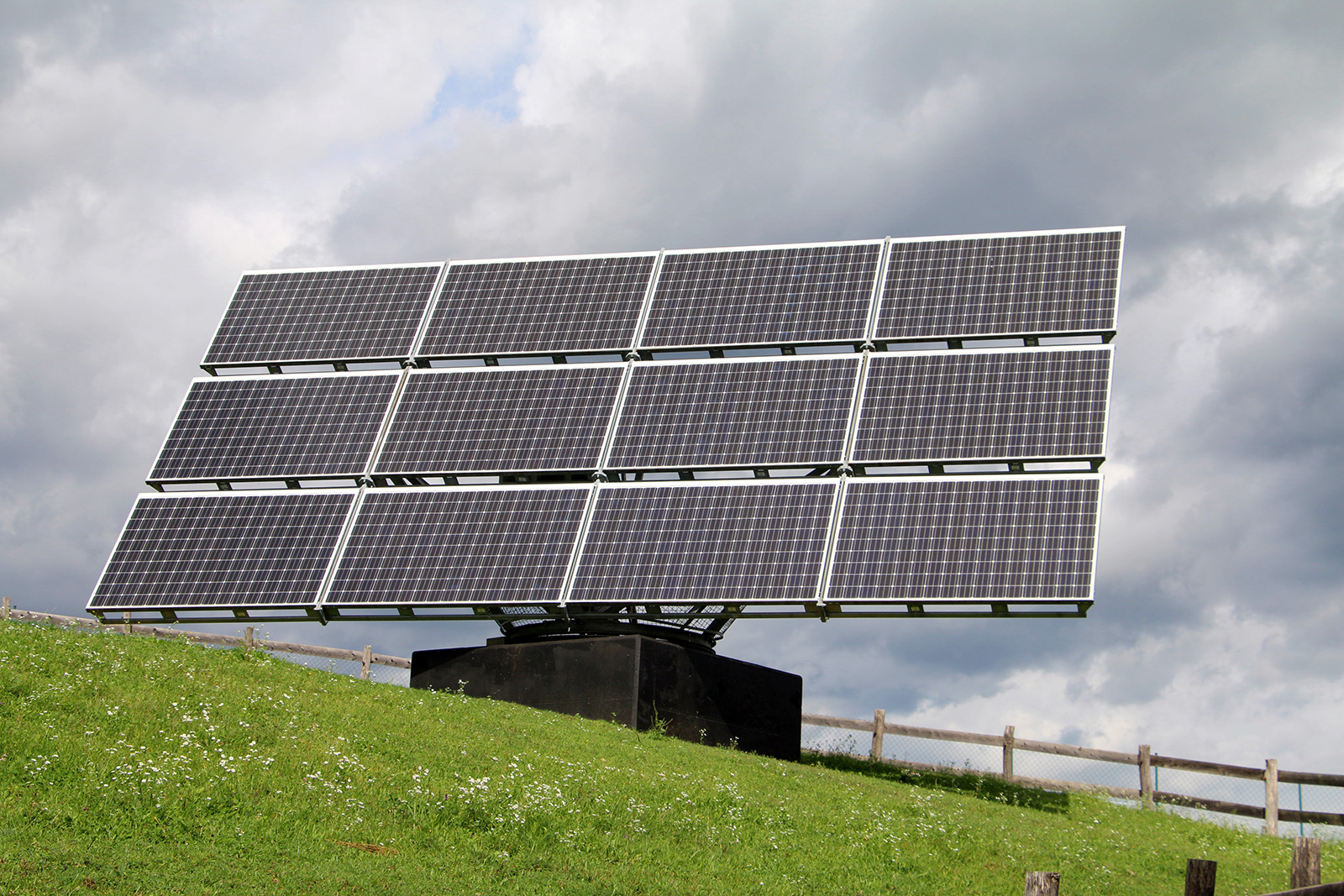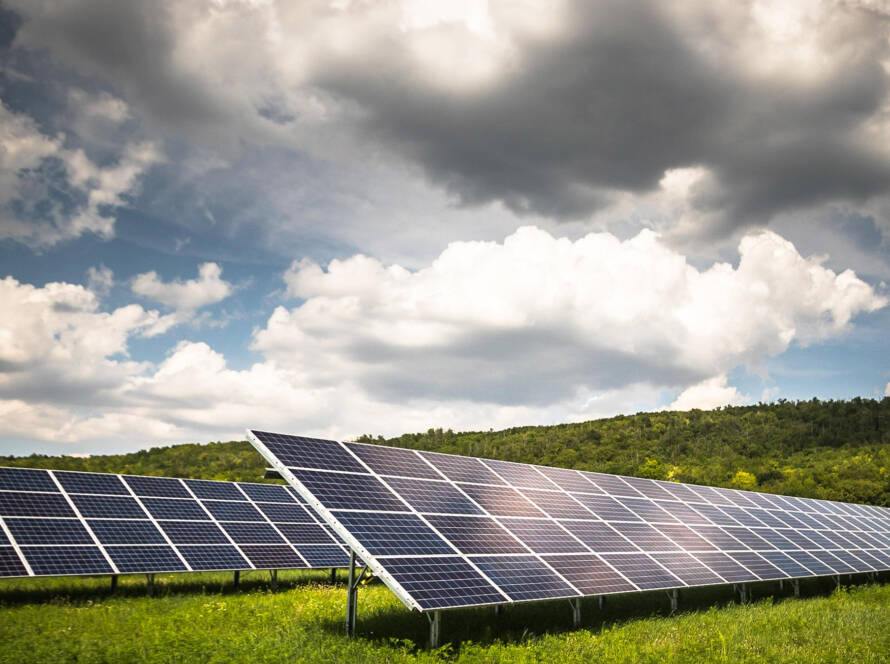Solar energy is electromagnetic radiation that is given off by the sun and captured to be turned into useful energy.
Plants absorb solar energy to turn sunlight into food through the process of photosynthesis, while humans capture sunlight to turn it into useful electricity using processes like the photovoltaic effect.

Solar Energy Definition
Our sun is a star made mostly of hydrogen and helium. It produces energy inside its core through a process called nuclear fusion, where hydrogen fuses together to make a lighter atom of helium.
The energy that’s lost in this process radiates into space as energy.
A small amount of this energy reaches the Earth. Every day, the solar energy that reaches the U.S. alone is enough to meet a year and a half of our energy needs.
Currently, the U.S has a solar power capacity of around 97.2 gigawatts.
Only about 3% of the electricity generated in the U.S. comes from solar energy. The rest comes overwhelmingly from conventional fossil fuels like coal and natural gas.
The Department of Energy predicts that by 2030, one in seven homes in the U.S. will have rooftop solar panels thanks to government incentives and cost reductions through more efficient technology.
Electricity Generation
Solar technology can take sunlight and change it into energy using photovoltaic (PV) solar panels or by concentrating the solar radiation using special mirrors.
Individual particles of light are called photons. These are tiny packets of electromagnetic radiation that have different amounts of energy depending on how quickly they move. Photons are released by the sun during the process of nuclear fusion when hydrogen is converted to helium. If photons have enough energy, they can be harnessed to generate electricity.
PV panels are made from individual PV cells.
These cells contain materials called semiconductors which allow electrons to flow through them. The most common type of semiconductor used in PV cells is crystalline silicon. It is relatively inexpensive, abundant, and lasts a long time. Out of all of the semiconductor materials, silicon is also one of the most efficient conductors of electricity.
When photons with a lot of energy come in contact with semiconductors, they can knock electrons loose. These electrons produce an electrical current that can be used for power or stored in a battery.
Solar Thermal Energy
Solar thermal energy (STE) technology captures solar energy and uses it for heat. There are three different categories of STE collectors: low, medium, and high temperature.



Solar Energy Today
Solar technology has made incredible strides over the past few decades, and it’s expected to grow even faster in the coming years. In almost all parts of the world, solar energy is the least expensive energy to produce.
And the costs continue to drop as technology improves.
Cost projections for one kilowatt-hour of electricity produced by solar are projected to be half a cent by the year 2050. That’s compared to the current commercial utility-scale rate of about 6 cents per kWh.
In 2016, the U.S. Department of Energy released its goals for SunShot 2030, which include reducing the costs of solar energy production and drastically increasing the amount of solar electricity generation. Expanding access to solar energy and reducing the amount of time it takes to create solar infrastructure are among the ways the Department of Energy plans to meet these goals.
Pros and Cons
Solar energy is increasingly affordable, and may even become cheaper than conventional energy produced by fossil fuels as the technology becomes more efficient. Government incentives for homeowners and businesses alike make it an attractive technology to invest in.
While there are plenty of pros to solar energy, the cons continue to keep it from being accessible to everyone. Unfortunately, not all consumers of electricity are able to install their own photovoltaic system. Some people do not own the place where they live, or their homes do not get enough sunlight to make solar panels efficient. And while the price of solar panels has decreased dramatically over the past decade, the upfront costs of installing rooftop solar are still cost-prohibitive for many.

On a commercial scale, solar energy production continues to be a way for companies to produce electricity without contributing to the increasing levels of greenhouse gasses in the atmosphere. Solar panels may be co-located with commercial crops in order to reduce the amount of arable land they render unusable for farming.
Solar electricity generation itself does not emit pollutants; however, the production of solar panels, unless run on solar energy, continues to produce emissions. Solar panels are also not recyclable in most parts of the world. At the end of their useful lives, most solar panels are disposed of in landfills. This process has the potential to release toxic chemicals into the environment.
Some facilities in Europe are leading the way in solar panel recycling and finding ways to reuse many of the original materials for new solar panels. This also reduces environmental impacts by decreasing the number of new semiconductor materials that need to be mined and processed. As solar energy increases in popularity and affordability, the demand for solar panel recycling will most likely increase.
FAQ
How much does solar energy cost?
In 2020, the International Energy Agency’s World Energy Outlook report called solar the “cheapest electricity in history.”
The U.S. solar industry met its 2020 cost target of $.06 per kWh three years early, in 2017, and now aims to decrease the cost further to $.03 per kWh by 2030.
How much of the energy used in the U.S. comes from solar?
The Office of Energy Efficiency and Renewable Energy says about 3% of all electricity used in the U.S. comes from solar energy “in the form of solar photovoltaics (PV) and concentrating solar-thermal power (CSP).”
What are the pitfalls of solar energy?
Solar energy is praised as a renewable alternative to fossil fuels, but while the energy production itself is carbon-neutral, the manufacturing of panels is known to be quite polluting. The panels are made with toxic chemicals that contaminate water and compromise air quality. Often, they’re also made from materials that have been mined unsustainably. And as of right now, they’re not widely recycled.
How do you know whether solar energy is right for you?
Switching from traditional fossil-fueled energy to solar could benefit you (and the planet) if your home gets five to six hours of sun per day. You should consider the climate where you live, local regulations, solar energy rates in your area, the size of your roof, and whether a solar system could increase or decrease your home’s value.



1 Comment
İsmail Can
The first goal of humanity must be produce the energy in green (renewable 100% and sustainable) manner, we require considerably more power every passing second and our planet’s future depends on how we produce the energy. We have to support companies which promote this concept.